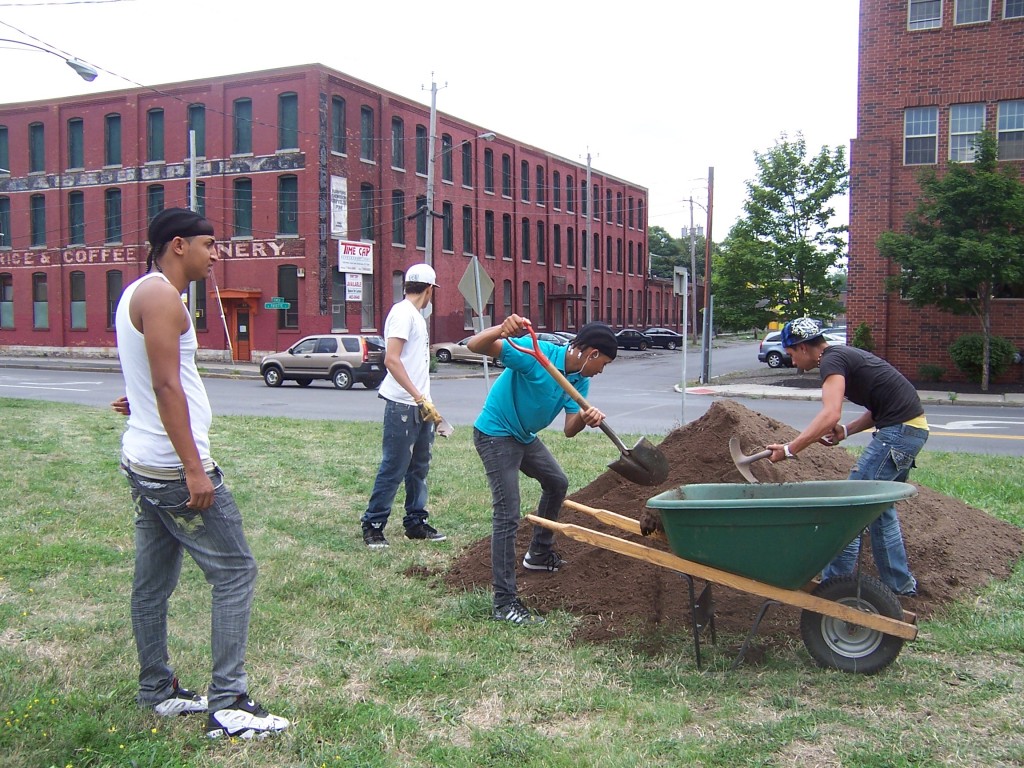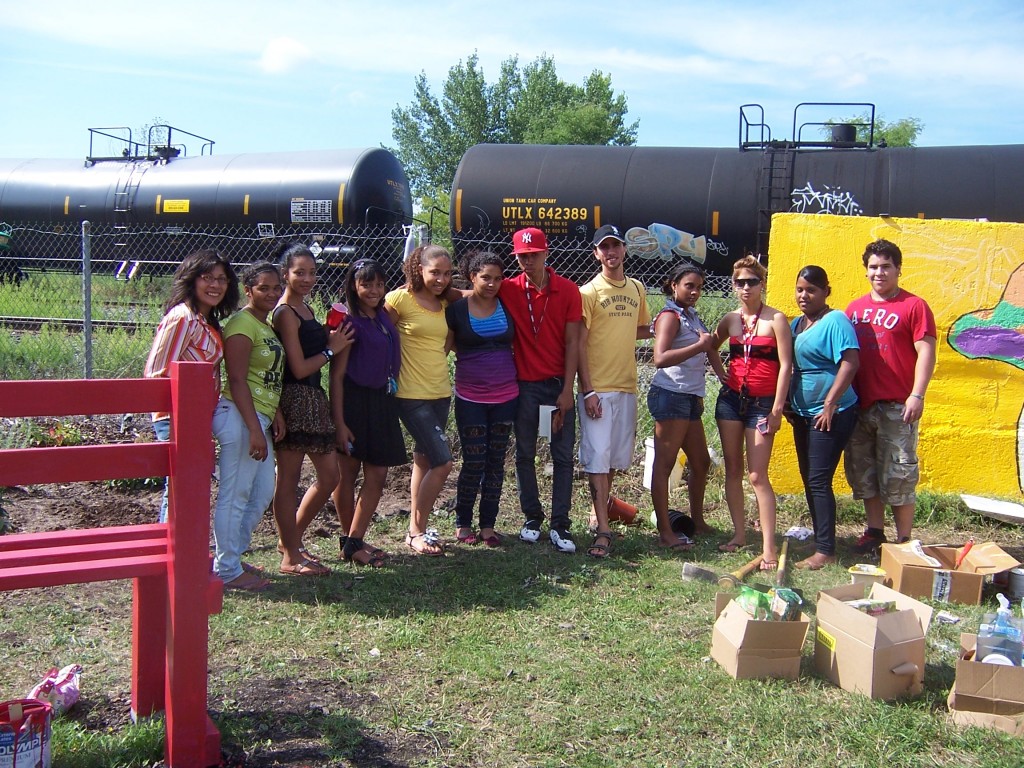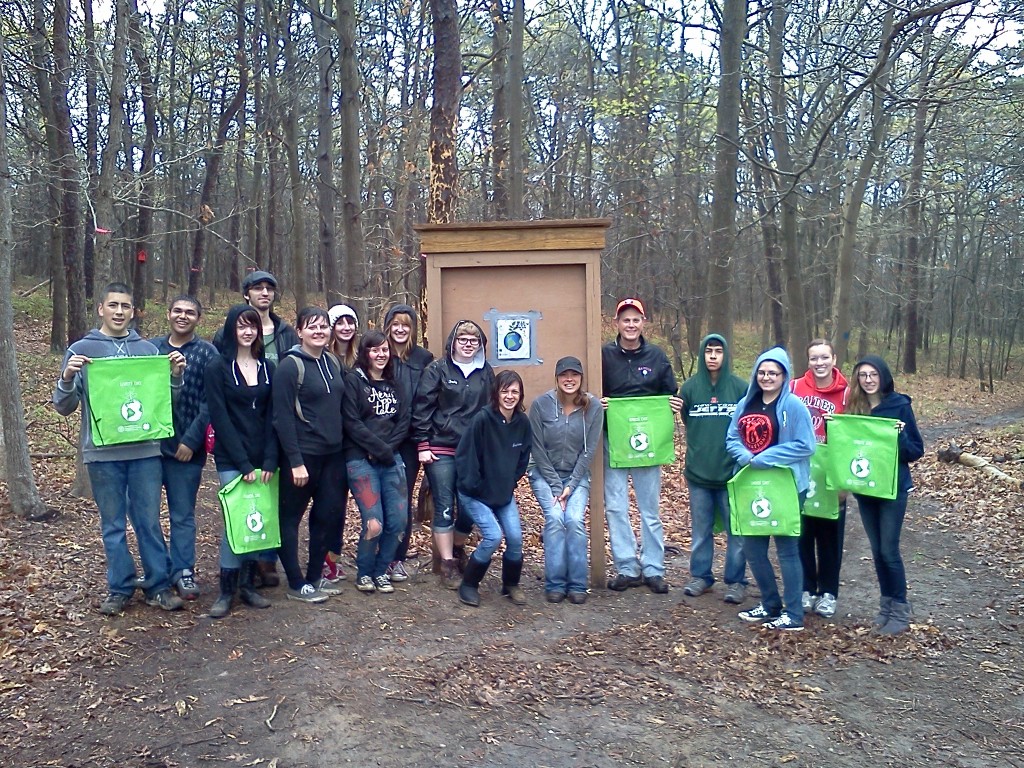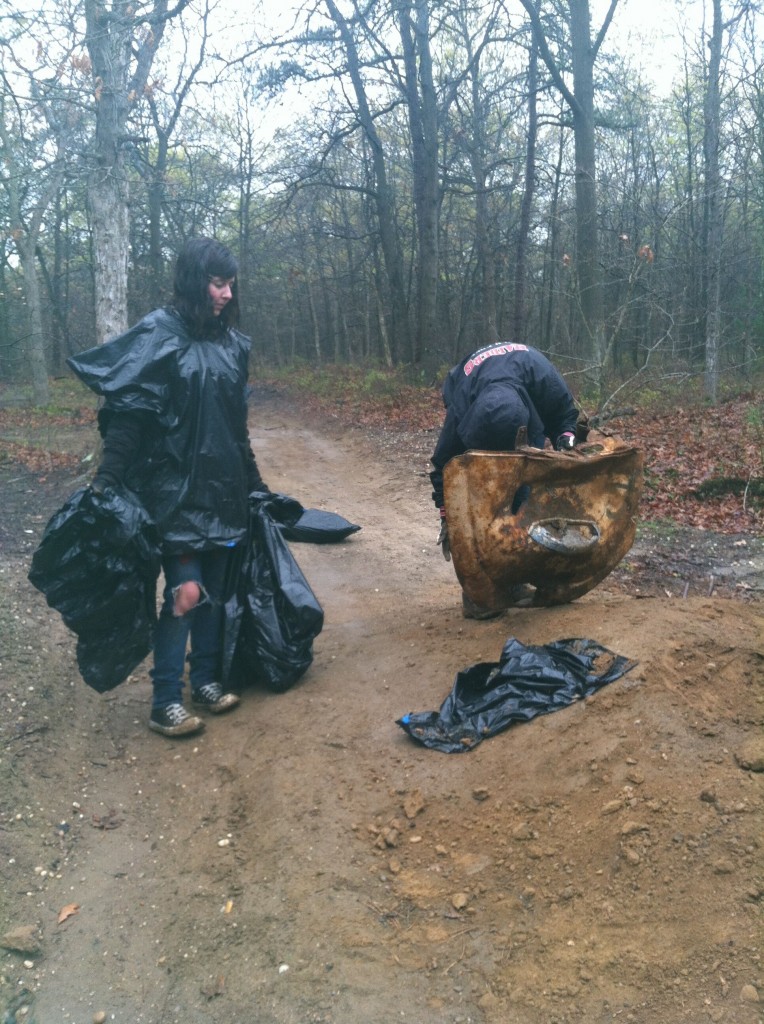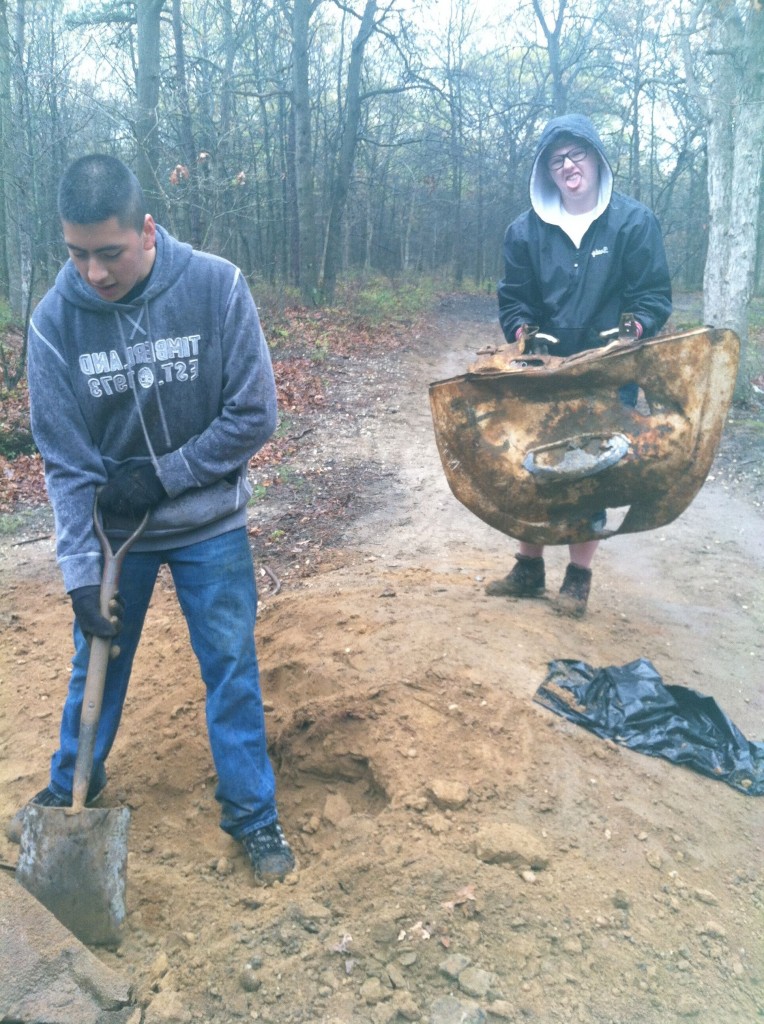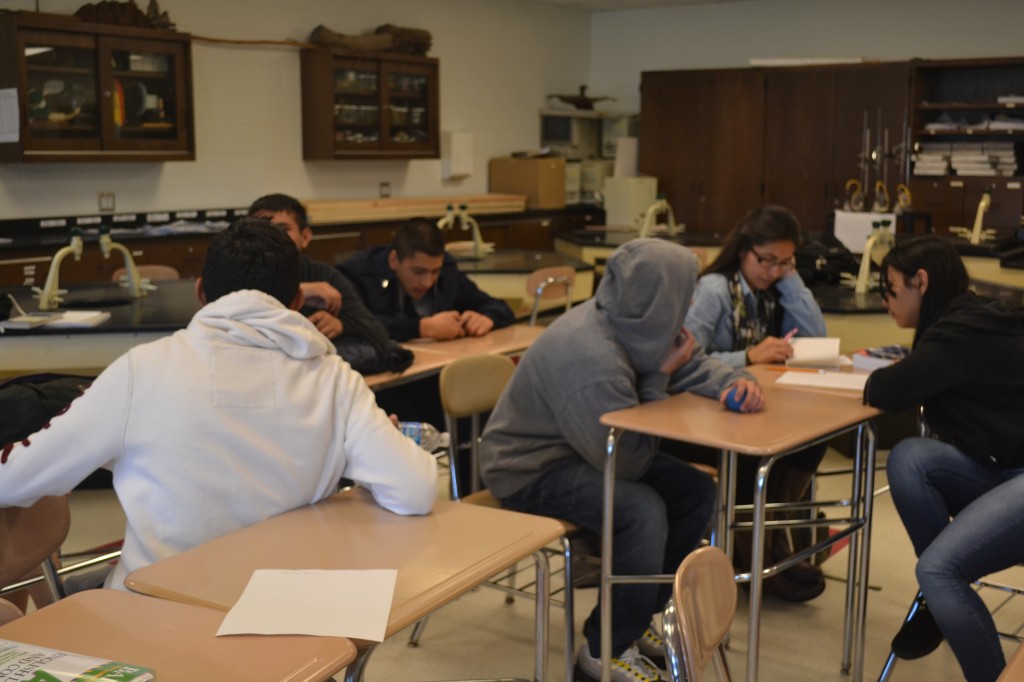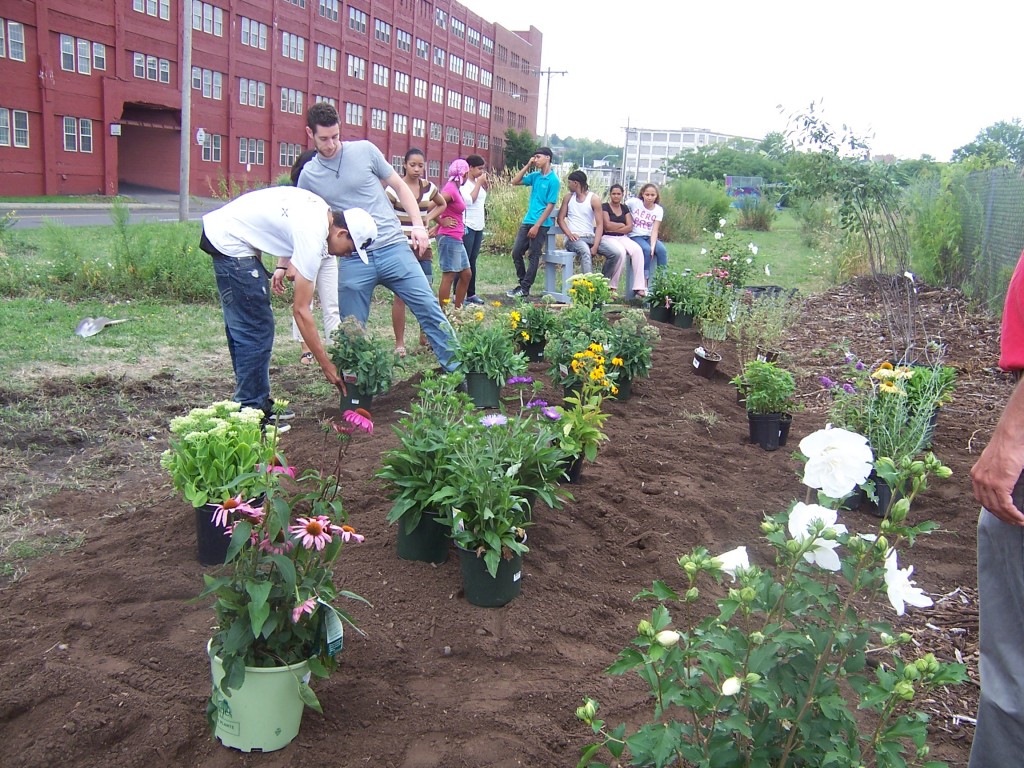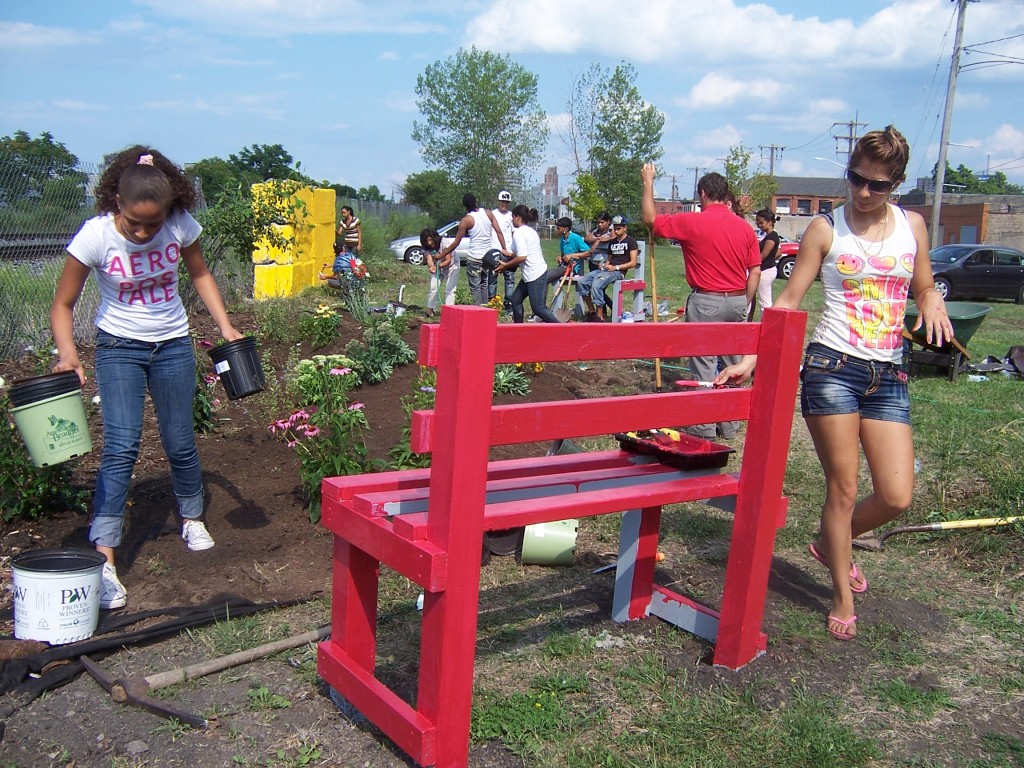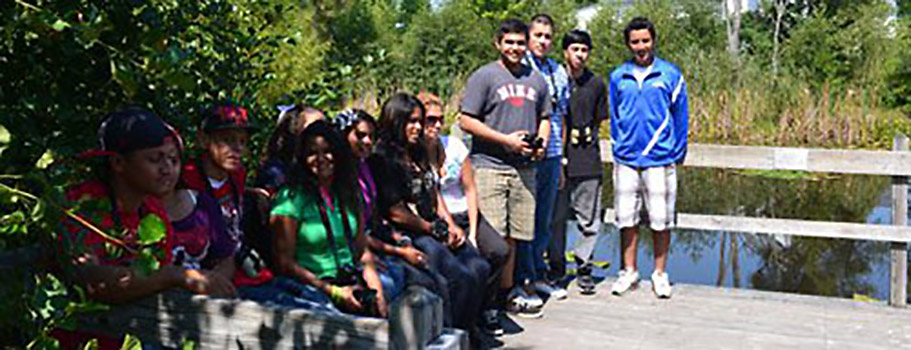
With Smith Lever funds and in collaboration with Cornell Cooperative Extension of Onondaga, Suffolk, and Orleans Counties and Nosotros Radio Inc., on August 24th 2012 we held a Latino Youth Summit at the Cornell Lab. This was a culmination of a year of work by partners and youth. Twenty-two youth participants traveled to the Cornell Lab of Ornithology for an exciting day of learning and sharing. We did not know how privileged we would be to host such an amazing group of young people!
The Syracuse group is called LACE (Latino Students, Advancement, Commitment, and Excellence) and the Long Island group calls itself The Thicklets. They traveled with their chaperones to the Cornell Lab of Ornithology in August to participate in a full day of lectures, tours, and walks, and to present the projects they have developed in their own communities focused on habitat improvement, birds, and community service. All lectures and tours were available in Spanish and English because many of these young people arrived in the U.S. only recently and are still working on attaining fluency in English.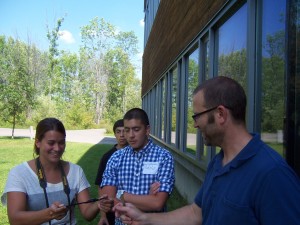
When the teenagers arrived at the Lab they had breakfast and then went on a brief tour of the Cornell University campus (about 5 miles from the Lab). For most of these youths it was the first time they had traveled to an “Ivy League” university. They saw a bit of central campus including one of the undergraduate libraries. They were very impressed and wanted to continue their visit–but they still had a full day of activities ahead at the Lab of Ornithology!
Once back at the Lab the students attended a lecture by Ashik Rahaman from our Bioacoustics Research Program. His talk showcased the wonderful work that the Lab is doing recording and tracking natural sounds across the world. Our young visitors learned about whale communication in the depths of the ocean and the impact of human commercial shipping activity. He spoke about cutting-edge conservation projects the Lab is involved in to protect North Altantic right whales using high tech apps. In addition, he spoke about the work the Lab is doing tracking forest elephants in Africa using sound and heat technology so that we can better understand their social behaviors during the night. They learned how sounds can be used to identify species and better understand animal communication and the impact of human activity. Ashik was incredibly impressed with the questions the students asked him!
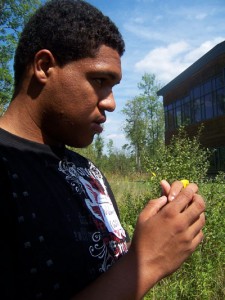
After lunch the students visited the Cornell University Museum of Vertebrates which is housed within the Lab. Collections manager, Charles Dardia, first showed them the prep lab where the specimens are prepared for the museum and he explained the procedures used. Then he showed them an impressive collection of fish, amphibians, mammals, and, of course, birds! Everyone was impressed and again they asked fantastic questions. They were especially interested in birds from their countries of origin (Cuba, The Dominican Republic, and Puerto Rico).
The day continued with a bird banding demonstration from the Lab’s David Bonter and his assistant Luke DeFisher. Bird banding was exciting. Students got to participate in trapping birds using mist nets, carefully freeing the birds from the nets, identifying them, recording lots of data (weight, wing measurements, etc…), placing bands on their legs, and then releasing them. David explained why it is important to band birds and let the young people touch the birds and some even got to hold tiny birds in their hands! David had students listen to the birds’ impressively fast heartbeats by placing the birds right next to their ears. It really was an amazing experience to hold such fragile creatures!
After dinner Cornell undergraduate Seth Inman gave a short talk about his experience at Cornell and his summer working for the Cornell Lab in mainland Ecuador and the Galápagos Islands. He shared photos, wonderful stories, and some videos.
Then, it was time for the students to present their projects. Most of the youth were a bit nervous–but they did a wonderful job! We were so impressed with their poised and inspiring presentations about the work they have been doing in their communities focused on greening, the arts, bird monitoring, and community education. Many presented their work in both English and Spanish, while others relied on translators. They showed photos, PowerPoint slides, movies, and posters. They spoke with elegance and energy and did a fantastic job describing the work they did–writing their proposals to obtain funding, planning, implementing, and presenting their work. They spoke of the ups and downs–the barriers and successes. They laughed and shared with enthusiasm. We loved it!
